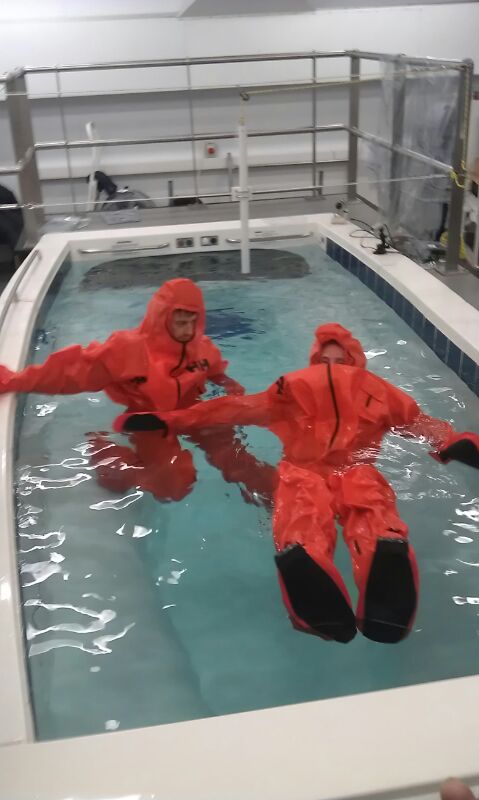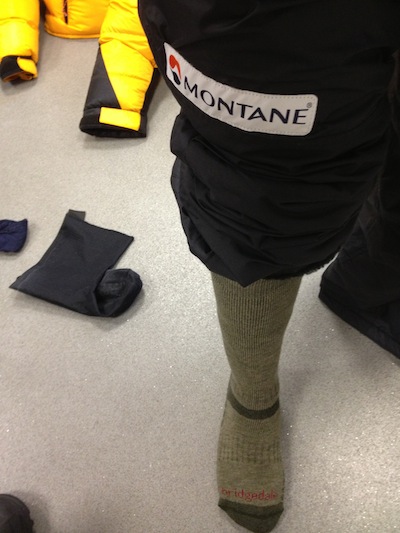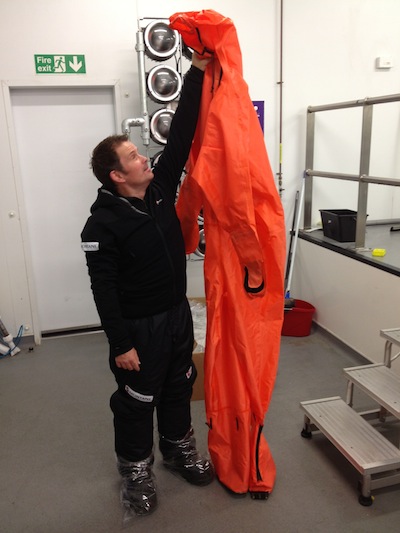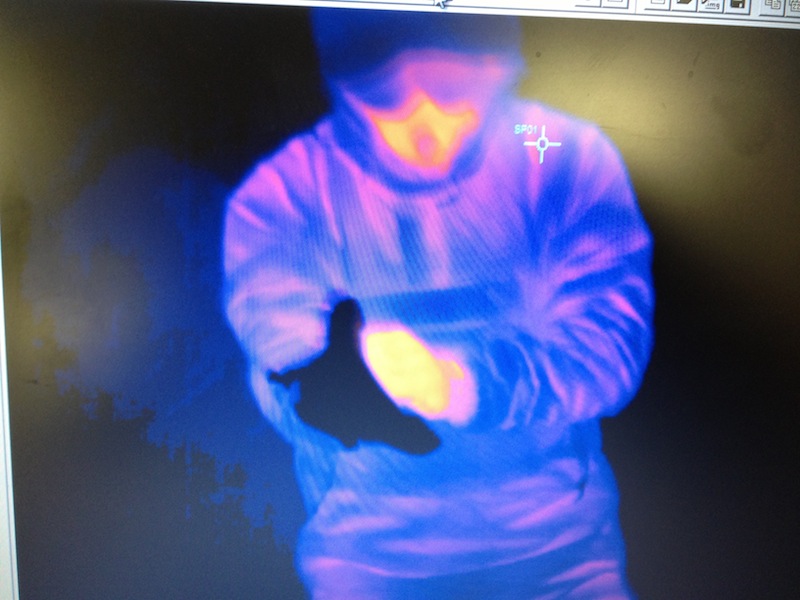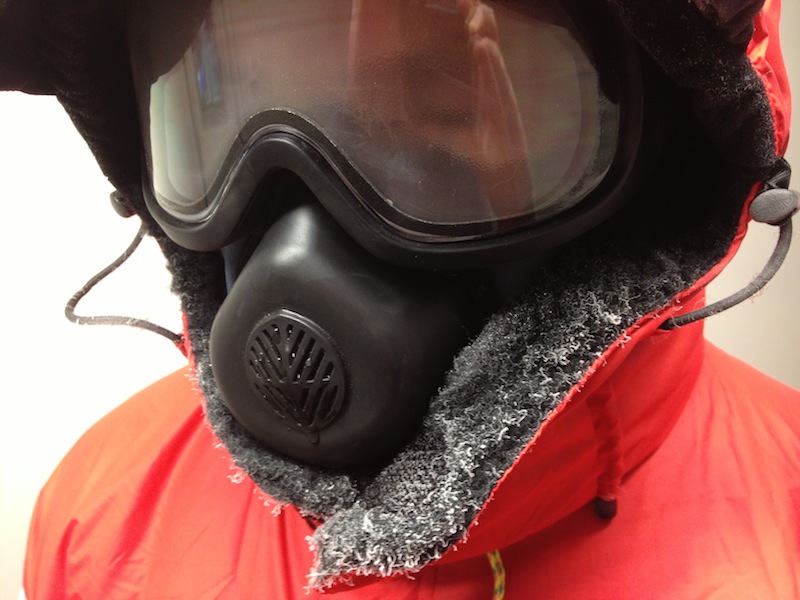Cold Chamber Testing
As part of our final rounds of equipment testing and thanks to Jim House and team at Portsmouth University, we were able to spend time in a cold chamber. Temperature, humidity and wind speed could be accurately controlled and we had various questions we needed answered. For example, breathability of Montane and Bridgedale clothing, warmth when static, effectiveness of damp socks and the performance our our goggle/mask combination.
After five hours of running half hour tests with every conceivable combination and using both visible light and thermal imaging filming, we had a full run of test passes with two exceptions. In full clothing and down insulation, there was minor fogging of goggles, caused mainly by breath not being fully channelled out from the mask. A dry anti-fog wipe seems to have sorted this out, which is a good thing since our eyesight will be critical in route finding and avoiding polar bears. Peripheral vision was impaired by the goggles and hood and so we're also looking to improve this.
Also, our electrics performed without a hitch and we were able to use an iPod Touch which was regularly moved from warm to extreme cold environments and back. The glove and stylus system was very successful and a number of consumer plastics were super-cooled and retained their plasticity, instead of going brittle.
Finally, the department's cold immersion tank became available and so Justin and I could fully evaluate the Hansen polar suits (thanks to Inge Solheim for these). A couple of pinhole leaks became very obvious (!) as our damp clothing underneath gave the game away. A quick dose of seam sealer solved this problem.
Here are some photographs which tell the rest of the story:
